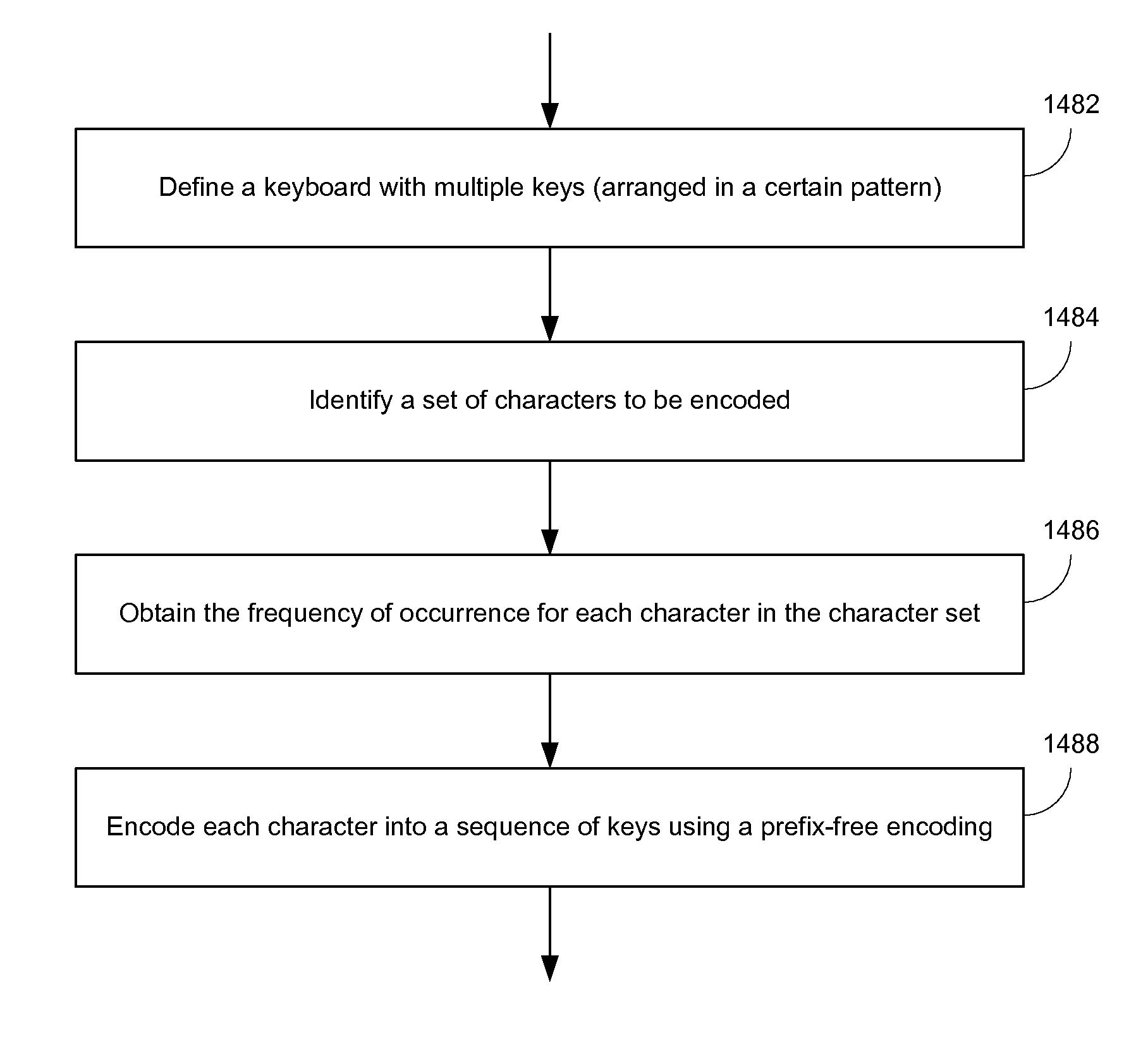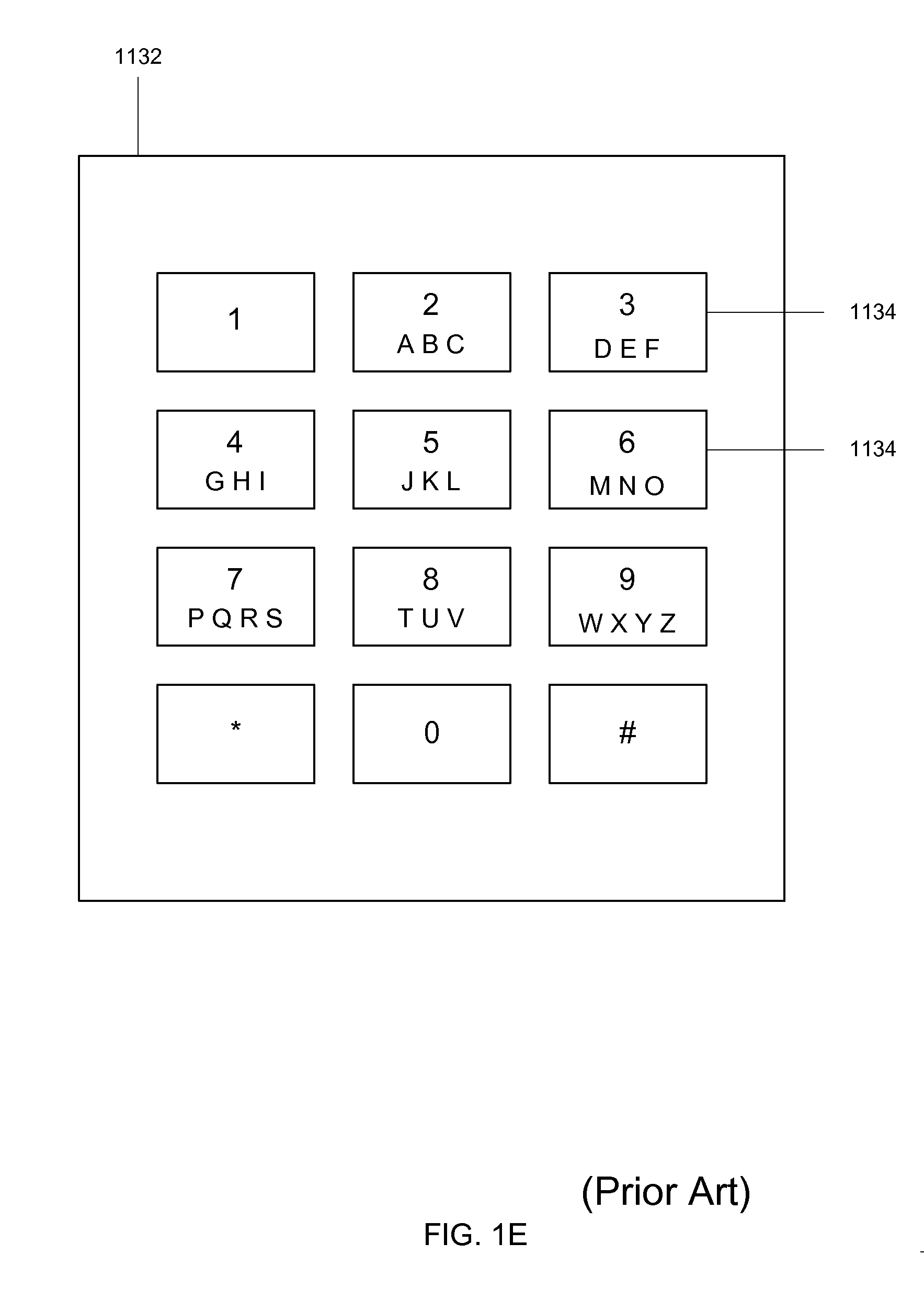Data entry using sequential keystrokes
a data entry and sequential key technology, applied in the field of keyboards, typewriters, data entry devices, can solve the problems of forced pause, user's inability to use all fingers, or even two hands, and become more difficult to represent characters in an efficient way, so as to achieve efficient configuring of the keyboard
- Summary
- Abstract
- Description
- Claims
- Application Information
AI Technical Summary
Benefits of technology
Problems solved by technology
Method used
Image
Examples
Embodiment Construction
[0013]At least one embodiment of the present invention teaches how to systematically design or configure an efficient and / or optimal sequential keystroke keyboard utilizing a prefix-free encoding, which is typically used in communications, for example, for purposes of data compression. In an embodiment of the present invention, a character-keystroke sequence mapping is devised as if characters are “encoded” using a set of keys (available on a target keyboard, etc.). Then the keyboard design includes a problem of finding an optimal (or, otherwise efficient) encoding scheme for the given character set with the available keys. In embodiments of the present invention, a user inputs data from a predefined set of characters on an input device with a limited number of keys by pressing one or more keys, in a sequential fashion, for each character. According to an embodiment of the present invention, the character vs. key sequence mapping is devised so that the average time to type typical s...
PUM
 Login to View More
Login to View More Abstract
Description
Claims
Application Information
 Login to View More
Login to View More - R&D
- Intellectual Property
- Life Sciences
- Materials
- Tech Scout
- Unparalleled Data Quality
- Higher Quality Content
- 60% Fewer Hallucinations
Browse by: Latest US Patents, China's latest patents, Technical Efficacy Thesaurus, Application Domain, Technology Topic, Popular Technical Reports.
© 2025 PatSnap. All rights reserved.Legal|Privacy policy|Modern Slavery Act Transparency Statement|Sitemap|About US| Contact US: help@patsnap.com



